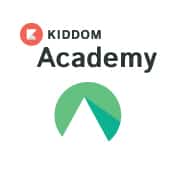![]()
Jessica Hunsinger
Product Manager
Former educator passionate about building human potential. Saving teachers time through interoperability is what currently drives me.
We chatted with Jessica Hunsinger, Product Manager at Kiddom, to learn about the “Curriculum” element of a groundbreaking new feature, responsive curriculum management. Jessica brings a unique perspective, as a former teacher who has been involved with Kiddom from the building of our free product for teachers, Kiddom Classroom, to Kiddom Academy, our paid product for administrators.
You can view the other stages in this series as posted here:
- Curriculum (Stage 1 & 2): curriculum developers & teachers
- Instruction (Stage 3 & 4): teachers & students
- Assessment (Stage 5 & 6): administrators & teachers
Teachers are not robots — the beauty of what a teacher does is in how they put their own passion and personality into bringing these lessons to life.
Why Would Curriculum Developers Want to Share Curriculum With Their Teachers?
This was one of the first questions we asked in our research to build Academy, and of course there are many reasons. The end goal for all schools is the students — learning and achievement. But why would they want teachers to work on the same thing?
It’s always about making sure every student in your school receives an excellent education.
And yet there is also this understanding that teachers are not robots — that the beauty of what a teacher does is in how they put their own passion and personality into bringing these lessons to life.
Yet in order to promote student equity and give every student a quality education, school leaders need to make meaning of their data.
Sometimes they try having these normed benchmark assessments a few times a year. But the problem is, those aren’t teacher created. So they don’t come often enough to respond quickly, and since the teachers didn’t create it, there isn’t always alignment to the testing.
So the goal is, at the bare minimum, to say, “by this date, we would like you to cover this.” We knew that administrators wanted to sort of set expectations — we later defined that as calibrating expectations — across classrooms and in talking with a variety of people involved with curriculum, we made some discoveries.
Curriculum Developers
Who’s in Charge of Curriculum? The Many Faces of the “Curriculum” Role
Teachers
Some of the roles we talked to in our research process so far:
- Director of Curriculum and Instruction
- Teacher Leader tasked with helping their district build curriculum
- Principal doing project-based enabling teachers to define loose curriculum projects
- Kiddom user who was already using Kiddom’s Planner tool
…but the person responsible for building curriculum varies at every school, including:
- Director of Curriculum Instruction
- Instructional Coach
- Team Lead of X Department (Science, etc.)
- Assistant Principal — who happens to also be responsible for instruction
- District-wide instructional support
The Collaborative Curriculum Building Solution
As you can see, every school has a different system. But at the end of the day, we see teachers submitting plans to administrators or school leaders are often collaborating back and forth.
So with our instructional days and skills attached to the unit within the app, we’re helping them say “within this time frame you can cover this skill in anyway you want.” That way, everyone wins. Teachers are teaching what they want; and the curriculum role is able to look at apples to apples comparisons about their curriculum.

What Academy’s Classroom Insights Aren’t Made for:
The point is not to see how far one classroom has gotten versus another. While you administrators do have the visibility to drill down and see that discrepancy — we see this more as a way for school leaders to make sense of the day-to day instructional data, as opposed to benchmark assessment data.
It’s also not made to spy on teachers. Rather, it’s made so teachers won’t have to waste time explaining classroom insights. Admins can see in realtime what is happening in the classroom. So they can plan to do observations on a meaningful day, or see that a certain student didn’t attend the day that x skill was taught.
Which steps take place in the Curriculum stage?

Step 1: Plan, Design, & Align
In this stage, a school leader would plan out courses. Here, a curriculum role can build the scope and sequence, align each unit to standards, and design the content, if he or she wishes.
Here administrators can add units, standards, and other details, then click into any teacher’s curriculum to view what resources teachers have added into their Planner.

Step 2: Share & Fine Tune
In this stage, the curriculum is shared with teachers where they can then build it out in Planner. This is where Academy is unique, in that it bridges a gap from the curriculum management tool to the Classroom.
Here teachers can build out their student Timeline by choosing content for the Units that have appeared in their Planner — whether they wish to add their own custom content by attaching a file or integrating with Google Drive, or choosing one of the 70,000+ resources available within Kiddom’s content library. The curriculum director and teacher both have the visibility to see the plan and share resources freely.


Teachers can access and use the curriculum designed in Academy, simply dragging resources from Planner and dropping them into a a student’s Timeline.
The Greatest Benefits of Responsive Curriculum Management for Curriculum Developers
For one, curriculum developers using responsive curriculum management serve to gain a deeper understanding from the rich measurement of multiple layers of teaching and learning, which allows their curriculum to be analyzed and improved upon swiftly — an added bonus here is the ability to measure personalization efforts. Both of these points roll up into the greater goal shared be most learning communities: every child can receive a quality education.
Another crucial benefit is the ability to collaborate with transparency. As teachers and curriculum developers collaborate to build a shared framework, they’re able to discover and reuse their “greatest hits” curriculum. This can be carried on to new semesters, or across multiple classes in a subject. In effect, the most successful content or teaching styles will surface to shape that curriculum into something far greater through collaboration.
You can view the other stages in this series as posted here:
- Curriculum (Stage 1 & 2): curriculum developers & teachers
- Instruction (Stage 3 & 4): teachers & students
- Assessment (Stage 5 & 6): administrators & teachers
What is Responsive Curriculum Management?
Responsive Curriculum Management (RCM) is a feature that calibrates curriculum across school systems so that learning trends can be discovered and acted upon in a timely manner.
By including all stakeholders in a child’s education, RCM effectively bridges the gap between curriculum, instruction, and assessment.
- To learn more about RCM, visit Introducing Responsive Curriculum Management.
- To learn more about implementation, visit our RCM Success series.
- Want to see it for yourself? Start building curriculum with your community today with our 2-Week Free Trial.


Kiddom Academy picks up where the LMS leaves off, offering an operating system for K-12 schools and districts to measure and act on classroom intelligence. We define a K-12 operating system as a set of interconnected tools to enable schools to operate more productively, increase student outcomes, and improve upon their respective instructional models.